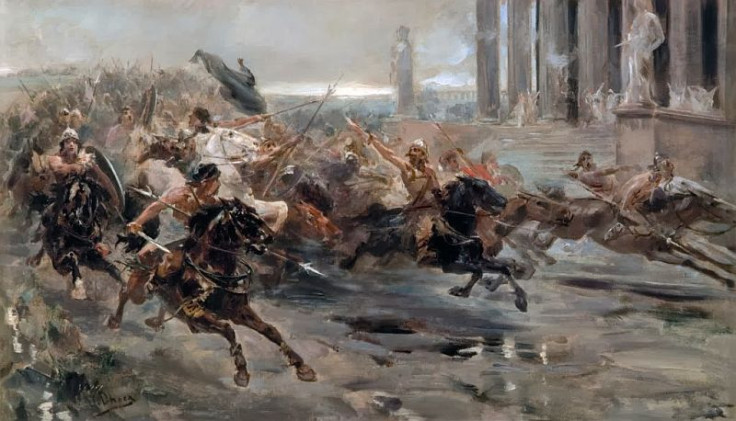How the Huns influenced Romans at the frontiers of the Empire 1,500 years ago
Roman settlers nay have borrowed subsistence strategies from nomadic groups.

In historical sources, mentions of the Huns often evoke scenes of terror and violence.
These nomadic people, who inhabited the steppes of Central Asia between the 1<sup>st and 7<sup>th centuries, are often described as having engaged in brutal conflicts with the late Roman populations that lived at the frontier of the Empire. However, archaeological evidence on the subject is sparse.
In a study now published in the open-access journal PLOS ONE, scientists have contradicted this view. They have showed that nomadic Huns and Roman settlers in the province of Pannonia, near the Danube River, may in fact have cooperated and borrowed from each other's lifestyles.
"Historic sources regarding the Huns describe them as violent and a threat to Roman civilisation, and this has created our framework of understanding of these people. But the archaeological evidence is less clear", lead author Susanne Hakenbeck, from Cambridge University, told IBTimes UK.
"There is an element of bias to Roman sources that we wanted to question. Our scientific methods allowed us to look for evidence of how ordinary people near the frontier of the Roman Empire lived and how they were impacted by the Huns in their lifetime".
Isotope analyses at the frontier
The team studied the remains of individuals buried at five sites from the fifth century and located at the edges of the late Roman Empire – two within its territory, two on its border and the last one well beyond the Roman frontier, in the Great Hungarian Plain.
The scientists conducted carbon, nitrogen, strontium and oxygen isotope analyses of bone collagen, dentine and tooth enamel. They compared their results to published data about agricultural populations that lived around that time in Germany and about people of Central Asia – who would likely have been herders.
"Their diets would have represented two endpoints and our questions was, where do our people, who were likely exposed to the Huns, fit in?", Hakenbeck said.
The isotope analyses suggests that the people living at the Roman Empire frontier in the 5<sup>th century borrowed from both the nomadic and agricultural lifestyles, with relatively little difference in diets identified from one site to another.
An agricultural diet at the time would have been characterised by cereals (wheat and barley), pulses and moderate amounts of meat. In contrast, a pastoral diet would have included more animal proteins alongside millet, a crop that is easy and quick to grow and often found in Central Asia.

The individuals studied here show signs of having followed both diets, with medium to high animal protein consumption and a great reliance on millet.
This suggests that local Roman settlers probably adopted some of the subsistence strategies seen in nomadic groups like the Huns, such as animal herding. Nomads living in the area may for their part have switched to smaller herds and more farming.
"Our study is the first to show widespread evidence for the impact of the Huns on the people that lived at the frontier of the Roman Empire. Although they were agricultural people, we see in their diet that they were likely influenced by the Huns' nomadic lifestyle", Hakenbeck said.
The findings also indicate that, rather than being characterised only by violence, the late Roman Empire may also have included cooperation between the people in the frontier zone.
© Copyright IBTimes 2025. All rights reserved.





















